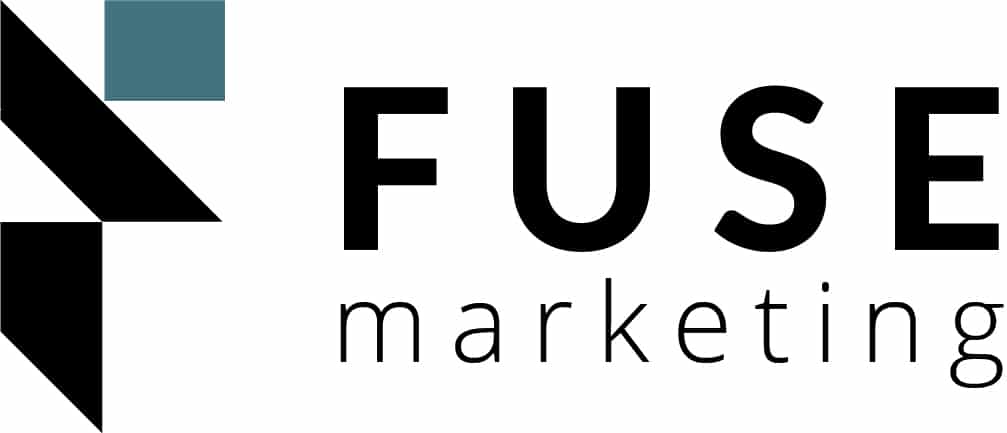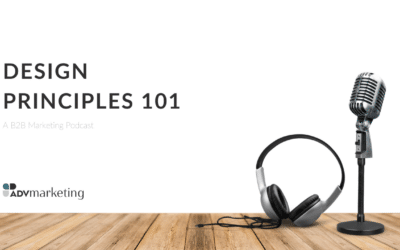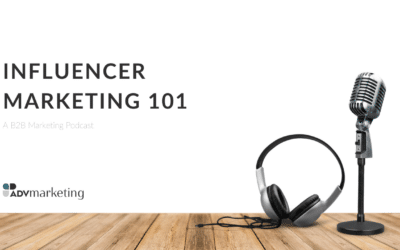You have an idea for a post or video, you create it, it does great, and then nothing happens for months until you have another idea. Does that timeline sound familiar? If so, you’re not the only one.
Join Lina and Sarah on this episode of Marketing Matters to hear about the common content failures that companies make, and how to solve them. Whether you’re active on your platforms or you haven’t posted in months, learn how to leverage your content to reach your goals.
Highlights:
- What is reactionary marketing?
- What does it mean to create content for long-term success?
- What are the common mistakes that companies make when planning their content?
- What are the keys to success in content marketing?
- What is the difference between short-term and long-term needs in the content planning process?
- How can you create a content implementation plan?
Follow us!
Be sure to subscribe and leave a comment or review!
See you on the first Monday of next month!
Marketing Matters is brought to you by ADV Marketing
Lina:
Hi there. We’re ADV Marketing, a marketing agency that develops high quality and cost-effective marketing materials. Our relationship-driven business model and customized marketing solutions makes us the perfect partner for small businesses looking to grow. I’m your host, Lina Rice. Join Sarah and me here on Marketing Matters every other Monday to discuss business-to-business marketing topics. Now let’s get into the episode.
00;00;37;25 – 00;00;53;11
Lina:
Hello, everyone, and welcome back to another episode of Marketing Matters, a podcast where we discuss all things marketing and how it’s related to your business. I mean, maybe you should have done the spiel. We flipped, we flipped sides for some differentiation. I feel weird about it. I think I now resonate with Sheldon Cooper. That is my spot.
Sarah:
And I feel like I’m sitting in the director’s chair.
Lina:
You know, it’s just a couch.
Sarah:
I know, but I’m like, I’m in the director’s position.
Lina:
I mean, you’re welcome to. Do you want to lead the podcast?
Sarah:
No, I like it when you do. You’re so good at it.
00;01;12;18 – 00;01;39;00
Lina:
That’s fine, I can talk about it. Okay, so today, this is actually a topic that Sarah picked out.
Sarah:
So I’m kind of involved.
Lina:
Sarah, you’re your co-host of the podcast. You’re always involved.
Sarah:
Oh I’m just saying.
Lina:
Oh my gosh. So today we’re going to be talking about the content planning process because we’ve talked a lot about content in the past couple episodes of this season and content is a beast.
Sarah:
Yeah.
Lina:
So from a business perspective, you know, how do you plan your content, right? Like that’s a hard thing. Like because, I don’t know about you guys, but I get blank page syndrome. I do not like a blank page. I don’t, it’s not my friend.
Sarah:
All creatives do. All people do.
Lina:
Yeah. Most people are very blank page adverse. We’re like, “No thank you. Give me some, give me a template. Can I have a template?” So think of this episode as your content template.
Sarah:
Yeah.
Lina:
Because we’re gonna walk you through how to do it.
Sarah:
Yeah. It’s like your starting place. I like that Lina.
Lina:
Yeah it’s like your content template. Oh, that could be the episode title.
Sarah:
Yay, that’d be cute.
00;02;17;18 – 00;02;48;17
Lina:
Yeah. Okay. So, let’s talk about content. What’s like, what’s the golden rule for content Sarah?
Sarah:
There’s so many golden rules. Lina you’re just gonna throw these questions at me?
Lina:
It’s, it’s “A” on the sheet here.
Sarah:
Oh, you should plan for long term success.
Lina:
What are your other golden rules? Now I’m curious.
Sarah:
No, okay, well, I think authenticity is a golden rule.
Lina:
That’s fair.
Sarah:
And it has to be related to you. It has to be valuable.
Lina:
It’s like the pillars, what were those called? You had like the pillars in elementary school, and they were like the standard. Okay, I’m not crazy. But it was like, you know, like respect was one of those.
Sarah:
Yes, like you had like, respect, integrity, responsibility.
Lina:
Yes. Yeah. But it was called something. It wasn’t the golden rule, but it was like it was called something like that.
00;03;11;18 – 00;03;36;04
Sarah:
Yeah. Okay. That’s just seen that all elementary schools, they all have pillars.
Lina:
Okay, I don’t know, maybe it’s a Texas thing.
Sarah:
Well, a key pillar.
Lina:
Yeah, maybe it was like that.
Sarah:
Maybe.
Lina:
I don’t know.
Sarah:
A key pillar of content planning is plan for long term success.
Lina:
Yes, completely agree.
Sarah:
And we will talk about the difference between short term and long term and also the common mistakes and the places that companies fail in playing their content. But I’m not the host. You are.
Lina:
Well, no, I completely agree.
Sarah:
Yeah.
Lina:
So. Okay, so let’s start with the problem and why long-term content is the solution.
Sarah:
Yes. So let me set the scene for you, Lina.
Lina:
Go for it.
Sarah:
So typically, what happens or what we see happen in companies where the person producing marketing is not a marketer, they’re usually doing marketing and it’s like, “Oh yeah, I need to market my new business or growing business or whatever.”
00;04;08;05 – 00;04;27;17
Lina:
Yeah, typically it’s the owner or maybe they’ve given it over to a sales rep because they’re just like, “I just need someone to do this.”
Sarah:
Like it’s a side hustle kind of deal. You know, typically what happens is someone has a great idea and they’re like, “This is a fabulous idea for this one post or this one video.”
Lina:
Or better yet, they didn’t know it was a good idea until they posted it.
00;04;27;19 – 00;04;57;12
Sarah:
Yeah. So the person just posted something that worked.
Lina:
That happens a lot.
Sarah:
Yes. So they post one thing. They had one great idea and it does fabulous. And then nothing happens. There’s no post on their social, they go dead silent for multiple months, like nothing is updated, their websites are outdated. They may not even have a website. Like nothing is being updated or being told to consumers until six months later, when they have another great idea, and then they post another thing. This is the epitome of reactionary marketing. What they’ve become is trapped in a reactionary cycle, which we know and we have said before: reactionary marketing is not effective marketing. It just means you’re following behind your competitors when the whole point is to stand out from your competitors.
Lina:
Unfortunately, TikTok has kind of trained people to think that reactionary marketing is the best thing ever, because that’s kind of how the whole platform works, right? Like there’s a trend and then everybody posts on this trend for the first three days, it lasts three days. That is a statistic that you can read if you’re curious. And then after those three days, a new trend occurs. Which is super interesting. And I could talk about trends all day long because I’ve done a lot of research about trends, and I find it very fascinating.
00;05;53;02 – 00;06;17;17
Sarah:
We should have a podcast about trends.
Lina:
Trends are interesting. It all dates back to the fashion industry, which is the most interesting part of it all is it’s all connected to, because that was like the one trend way back before social media. But anyway, that’s my soapbox. Basically, trends aren’t good actually for your marketing, not long term. Like that’s not going to put you in front of everybody all the time.
Sarah:
And if you notice the people doing those trends on Tik Tok, one) are not B2B
Lina:
Well, yes, I was just giving you the example.
Sarah:
Yes. But they also have like in-house marketing resources and in-house social media teams, not just marketing teams, literally whole teams dedicated to social media. And they can turn around things in three days, right? Don’t do that.
Lina:
That’s is so stressful.
Sarah:
It is stressful. And when you’re stressed, your content is only mediocre, or you’re on of the last people to post it or you don’t get on the hashtag in time. No, not the best place to spend your time or stress. But I agree, the key to successful content marketing in what we do is continuity and consistency, which is the exact opposite of just posting sporadically whenever you have time. You want consistent planning and it’s not just about posting content for the sake of posting content. It’s literally in response to social media algorithms. Algorithms prioritize accounts that are posting consistently with high value content, not just randomly every six months.
Lina:
Right.
Sarah:
You might get really good responses on your one post for six months, but you are also missing out on all of the consistent engagement. You could be seen. You’re missing out on all the people who are looking at LinkedIn but think you’re outdated because you haven’t posted in six months, that kind of thing.
00;07;50;02 – 00;08;14;17
Lina:
Think Tortoise and the Hare.
Sarah:
Yes, actually that’s a good one.
Lina:
Yeah, it’s good. But it’s just the truth.
Sarah:
Exactly.
Lina:
So let’s talk about our content planning process, because I think that that will really help people understand what their process needs to be and kind of be able to use that as their template and guide for content.
Sarah:
Okay. So first, if you’re tackling a short-term need, which is pretty common, right? Like people rebrand, they start companies, if they go to events like they have all these things. Packages, well, we offer packages, but that is what those are for. It is for like, “I just need to get through the next three months, announce this thing happening or support this big event that I’m expecting lots of business to come from,” that sort of thing. That short-term success that can be effective if your objective is to support an event, because that’s what it’s for. That’s what it achieves. Check, check. You’re awesome.
Lina:
Yeah.
Sarah:
The other thing is long-term means and if you’re looking to be the kind of business that generates organic leads through your website or social media, you need to be focusing on long term successful content marketing, right? And that requires leveraging marketing as a value add. And that sounds so jargony, but like breaking it down, it is about leveraging the content you’re creating to actually be useful for you.
00;09;19;24 – 00;09;41;09
Lina:
Yeah.
Sarah:
And long term, that requires that consistency in high value content that we just talked about. It will make your sales easier, it will build your brand and it also builds your presence and make it easier down the road for your business to continue growing instead of stagnate, which everyone does not want a business that means stagnates.
00;09;41;09 – 00;10;04;05
Lina:
No, not typically.
Sarah:
It’s not usually what people are going for.
Lina:
Yeah, if you are, go you.
Sarah:
Yeah if you are, we can offer lots of strategies to help you do that. But if you’re looking for a growing business that’s healthy, long term content planning will be key.
Lina:
Yeah, completely agree.
Sarah:
Great content combined with targeting is key to what we offer for our clients. You can go look at the artillery versus infantry episode that we already posted.
Lina:
We talk about that one so often.
Sarah:
We do, but it’s like central to what our company is.
Lina:
Yeah, it’s a central to our marketing beliefs.
Sarah:
Yes, I completely agree.
Lina:
Okay. So now that we kind of explained short-term, long-term content implementation plans. Break them down for our audience because I don’t know how many agencies really do this the way that we do it.
00;10;38;01 – 00;11;03;24
Sarah:
Yeah, so this is pretty unique to us, for our partner clients that are looking for the long-term content success that requires a very intentional plan for long term.
Lina:
Yes, we’re talking we’re planning a year in advance.
Sarah:
Yeah, like it’s long term. It is. It gives you a very holistic sense of what is going to happen over multiple months and how it’s going to be geared towards your objectives.
00;11;03;25 – 00;11;31;17
Lina:
Yep.
Sarah:
And it’s all about preventing reactionary marketing, but facilitating responsive marketing. And what I mean by that is these plans are not like chiseled into stone or burned wherever. Like, they’re not permanent, right? Because things change and marketing has to be responsive.
Lina:
Yes.
Sarah:
These are talking about dynamic markets and audiences, right? These plans are living, breathing documents. They can change. But the allocation of resources to each engagement activity will help you understand like, okay, “I’m actually at this stage in the consumer journey. So even though this idea that would be really great for further down in the journey sounds awesome, I really need to be focusing on this stage because most of my marketing hours are budgeted for this stage.” And if you want to change what you’re doing within that stage based on what the market is doing, that’s totally fine. You can change it around, you can drive where you need to. If an event comes up that you’re like, I know this is kind of, it’s not reactionary, it’s responsive. But if an event comes up that you didn’t expect, you can redirect resources to supporting that event, especially after you checked that it does further your objectives.
Lina:
Right. And I think that’s the key thing here is you need to establish your objectives because that is what everything needs to be connected to. If we are not promoting your goals, we’re not doing it right. Like if something is not going to help your goals, why would you spend market? Like, why would you spend your marketing budget on that? It doesn’t make sense. Instead, we’re going to do things that promote your business goals, your marketing goals, your financial goals, because at the end of the day, that’s what’s important.
00;12;49;04 – 00;13;18;13
Sarah:
Yes. And I’m not talking about a plan that’s like a PowerPoint, that’s like “January: Do LinkedIn.” No, it’s like, no, it’s very specific. It’s to your company. It’s topic oriented. Every plan looks different for every company, but it’s literally like a massive Excel.
Lina:
Yeah because every company has different needs. Your company might need website updates, your company might need print media for a conference that you’re going to that is going to further your business objectives. Your company might need LinkedIn content or video. Maybe you have an in-house marketing team that takes care of your LinkedIn content, so we’re going to come and support that LinkedIn content by doing other types of content. There’s just so many variations.
Sarah:
But it’s not this like intangible, abstract, like concept that’s like “Oh, like, oh, trust us, we have a plan.” No. Like, you see it.
Lina:
You’ll get to see the point.
Sarah:
Yeah, you’ll get to the point when you see the plan, you understand where we’re going, what metrics we’re measuring.
Lina:
Why we’re going there. We give you the why. And the why is important.
Sarah:
The why behind everything.
Lina:
Yeah.
Sarah:
So it it’s very intentional and that’s what it has to be for long term success.
Lina:
Completely agree. Well, do you have any last thoughts on the topic before we conclude? Okay, I know you have a lot. Actually, Siri had thoughts on the topic.
Sarah:
Anytime someone says “Hey Sarah,” Siri pops up, fun fact, it’s very weird. But anyway, overall content is really important and worth investing in and you can make it really effective, especially if you have the long-term mindset.
Lina:
I completely agree. Think long term, that’s the key takeaway for this episode. Actually, for all our episodes, just please.
Sarah:
I swear it’s all about value in the long run.
00;14;35;05 – 00;14;58;29
Lina:
It is.
Sarah:
I want to be like, “Trust me, this is what I do.” This is for long term success. Please.
Lina:
We need to put your two degrees hanging up.
Sarah:
I know. Both of our two degrees and then we have four.
Lina:
Yeah. Four combined.
Sarah:
Or we have our four degrees and then a sign that says “plan for long-term success.”
00;14;59;02 – 00;15;21;00
Lina:
Well, thank you so much for this listening to this week’s episode. We cannot wait to come back in two weeks with more topics, so be sure to subscribe, rate the podcast, leave us any comments or questions. Feel free to reach out to us on LinkedIn. We are very accessible. I think I answer like ten messages a week.
Sarah:
You’re popular. I’ve been like one a month.
Lina:
Half of them are spam. I do get a lot of I get a lot of students that reach out to me.
Sarah:
Oh, yeah. I like when students ask me questions.
Lina:
They’re like, “Oh, hi, can I ask you questions? And I’m like, “I mean, who doesn’t like to talk about themselves?”
Sarah:
I love it when kids ask!
00;15;40;29 – 00;15;50;16
Lina:
Yeah, truly. Okay, well, we will see you guys in two weeks. Bye guys!


